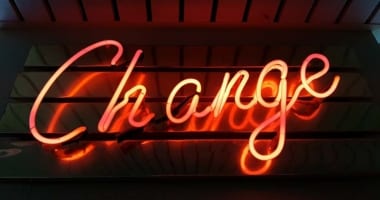Business today is reconnecting with its core purpose of addressing society’s needs in profitable ways. Some companies are forced into rethinking their “reason for being” from crisis and loss of trust (e.g. Volkswagen Group in the auto sector redirecting its efforts towards clean mobility after its emissions scandal). Some are mobilized by the internal costs created by growing social deficits (e.g. increasing health insurance costs linked to worsening population health). Others see opportunities for growth and innovation in addressing unmet societal needs (e.g. the utility sector seeking long-term growth in renewables and access to energy).
Regardless of where it takes root, and as described in our recent blog, a purpose worth having goes deep: it permeates a company’s strategy and operations, influencing not just which customers and needs to serve, but how to serve them. An authentic company purpose must guide both strategy and norms of operations.
The most powerful engine of corporate purpose is undeniably a company’s shared value strategy: the societal mission embodied in the purpose statement guides the business to redefine its products and services, its value chain activities and external investment, and to address specific unmet needs in significant and profitable ways. For example, Novo Nordisk’s purpose of “Changing Diabetes” leads it beyond the delivery of medicines to working with cities and patients to access better care.
But how strategy is realized also results from purpose. We do not want low greenhouse gas-emiting cars, for example, to be made by forced labor. Progress on any issue, such as education or health, is undermined if it comes at the expense of human rights or environmental destruction.
While strategy is always company-specific, norms come from cultural context and community consensus. They differ from one community or country to another, evolve continuously, and cover a multitude of dimensions that people care about around the world. Norms can be codified and measured to become standards. Standards are typically first adopted voluntarily and, in some cases, enforced through regulation.
When norms are not codified into standards, or standards not adopted, corporate practices can go astray. Think of bank fees; most countries do not regulate penalties for low balances. Unfortunately, this has offered fertile ground for the inequitable treatment of low-income households.
As standards proliferate, the challenge of choosing which standards to adopt becomes more difficult. Better standard-setters, such as SASB (Sustainability Accounting Standards Board), have helped clarify the notion of materiality. Some industries have greater opportunity to impact societal conditions as a result of what they do and how they operate. Labor- or water-intensive businesses, for example, should adopt superior labor or water management norms because they can most contribute to progress and benefit from improved practices.
Purpose-led companies have a sharper focus on norms. They lead as norms-makers, not just norms-takers. A purpose defines the societal conditions that the company will most advance. Its strategy redefines its offerings and business models, and therefore its most material issues that should be managed according to locally prevailing and accepted standards. But it does more than that; it points to areas for norms leadership: where a company has to set an example in how it operates its business. Companies that claim to be purpose-led are missing something critical if the way they treat their employees and suppliers is not consistent with their purpose. A company such as Humana, with a purpose to improve population health, must be exemplary in the way it leads on employee health and safety. A bank focused on the wellbeing and prosperity of its clients, such as Vancity, must clearly set norms related to the financial health of its own employees. And Pearson, dedicated to helping people grow through learning, must set a high bar on employee diversity and inclusion as a precondition for enabling learning both internally and externally.
As we described from the outset, our clients’ purpose journeys are not just created from strategic opportunities and seeing business potential in societal needs. They are also born from operational deficits and, in the worst cases, from crises triggered by falling far short of prevailing norms. As the company’s “reason for being” focuses on purpose, it must look for many different ways to lead, including how it can be a leader and make new norms for its industry. Transforming what the business does alongside how it does it will result in fully capturing all six sources of value from purpose.




